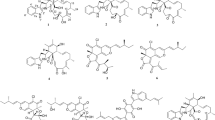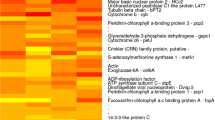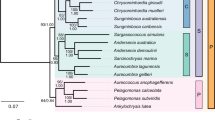Abstract
Mycosporine-like amino acids (MAAs) are multifunctional secondary metabolites involved in photoprotection in many marine organisms. As well as having broad ultraviolet (UV) absorption spectra (310–362 nm), these biological sunscreens are also involved in the prevention of oxidative stress. More than 20 different MAAs have been discovered so far, characterized by distinctive chemical structures and a broad ecological distribution. Additionally, UV-screening MAA metabolites have been investigated and used in biotechnology and cosmetics. The biosynthesis of MAAs has been suggested to occur via either the shikimate or pentose phosphate pathways. Despite their wide distribution in marine and freshwater species and also the commercial application in cosmetic products, there are still a number of uncertainties regarding the genetic, biochemical, and evolutionary origin of MAAs. Here, using a transcriptome-mining approach, we identify the gene counterparts from the shikimate or pentose phosphate pathway involved in MAA biosynthesis within the sequences of the reef-building coral symbiotic dinoflagellates (genus Symbiodinium). We also report the highly similar sequences of genes from the proposed MAA biosynthetic pathway involved in the metabolism of 4-deoxygadusol (direct MAA precursor) in various Symbiodinium strains confirming their algal origin and conserved nature. Finally, we reveal the separate identity of two O-methyltransferase genes, possibly involved in MAA biosynthesis, as well as nonribosomal peptide synthetase and adenosine triphosphate grasp homologs in symbiotic dinoflagellates. This study provides a biochemical and phylogenetic overview of the genes from the proposed MAA biosynthetic pathway with a focus on coral endosymbionts.




Similar content being viewed by others
References
Anthony KR, Kline DI, Diaz-Pulido G, Dove S, Hoegh-Guldberg O (2008) Ocean acidification causes bleaching and productivity loss in coral reef builders. Proc Natl Acad Sci U S A 105:17442–17446
Balskus EP, Walsh CT (2010) The genetic and molecular basis for sunscreen biosynthesis in cyanobacteria. Science 329:1653–1656
Banaszak AT, LaJeunesse TC, Trench RK (2000) The synthesis of mycosporine-like amino acids (MAAS) by cultured, symbiotic dinoflagellates. J Exp Mar Biol Ecol 249:219–233
Banaszak AT, Barba Santos MG, LaJeunesse TC, Lesser MP (2006) The distribution of mycosporine-like amino acids (MAAs) and the phylogenetic identity of symbiotic dinoflagellates in cnidarian hosts from the Mexican Caribbean. J Exp Mar Biol Ecol 337:131–146
Britton G (1995) Structure and properties of carotenoids in relation to function. FASEB J 9:1551–1558
Carignan MO, Cardozo KH, Oliveira-Silva D, Colepicolo P, Carreto JI (2009) Palythine-threonine, a major novel mycosporine-like amino acid (MAA) isolated from the hermatypic coral Pocillopora capitata. J Photochem Photobiol B 94:191–200
Carreto JI, Carignan MO (2011) Mycosporine-like amino acids: relevant secondary metabolites. Chemical and ecological aspects. Mar Drugs 9:387–446
Cockell CS, Knowland J (1999) Ultraviolet radiation screening compounds. Biol Rev Camb Philos Soc 74:311–345
DeSalvo MK, Voolstra CR, Sunagawa S, Schwarz JA, Stillman JH, Coffroth MA, Szmant AM, Medina M (2008) Differential gene expression during thermal stress and bleaching in the Caribbean coral Montastraea faveolata. Mol Ecol 17:3952–3971
Dunlap WC, Chalker BE (1986) Identification and quantitation of near-UV absorbing compounds (S-320) in a hermatypic scleractinian. Coral Reefs 5:155–159
Dunlap WC, Shick JM (1998) Ultraviolet radiation-absorbing mycosporine-like amino acids in coral reef organisms: a biochemical and environmental perspective. J Phycol 34:418–430
Fast NM, Xue L, Bingham S, Keeling PJ (2002) Re-examining alveolate evolution using multiple protein molecular phylogenies. J Eukaryot Microbiol 49:30–37
Favre-Bonvin J, Bernillon J, Salin N, Arpin N (1987) Biosynthesis of mycosporines: mycosporine glutaminol in Trichothecium roseum. Phytochemistry 26:2509–2514
Felsenstein J (1989) PHYLIP—Phylogeny inference package (Version 3.2). Cladistics 5:164–166
Ferrier-Pagès C, Richard C, Forcioli D, Allemand D, Pichon M, Shick JM (2007) Effects of temperature and UV radiation increases on the photosynthetic efficiency in four scleractinian coral species. Biol Bull 213:76–87
Hoegh-Guldberg O (1999) Climate change, coral bleaching and the future of the world’s coral reefs. Mar Freshw Res 50:839–866
Jokiel PL, Lesser MP, Ondrusek ME (1997) UV-absorbing compounds in the coral Pocillopora damicornis: interactive effects of UV radiation, photosynthetically active radiation, and water flow. Limnol Oceanogr 42:1468–1473
Klassen JL (2010) Phylogenetic and evolutionary patterns in microbial carotenoid biosynthesis are revealed by comparative genomics. PLoS One 5:e11257
Korbee N, Teresa Mata M, Figueroa FL (2010) Photoprotection mechanisms against ultraviolet radiation in Heterocapsa sp. (Dinophyceae) are influenced by nitrogen availability: mycosporine-like amino acids vs. xanthophyll cycle. Limnol Oceanogr 55:899–908
Kulms D, Schwarz T (2000) Molecular mechanisms of UV-induced apoptosis. Photodermatol Photoimmunol Photomed 16:195–201
Leggat W, Hoegh-Guldberg O, Dove S, Yellowlees D (2007) Analysis of an EST library from the dinoflagellate (Symbiodinium sp.) symbiont of reef-building corals. J Phycol 43:1010–1021
Leggat W, Seneca F, Wasmund K, Ukani L, Yellowlees D, Ainsworth TD (2011) Differential responses of the coral host and their algal symbiont to thermal stress. PLoS One 6:e26687
Leignel V, Cibois M, Moreau B, Chenais B (2007) Identification of new subgroup of HSP70 in Bythograeidae (hydrothermal crabs) and Xanthidae. Gene 396:84–92
Lesser MP (1996) Elevated temperatures and ultraviolet radiation cause oxidative stress and inhibit photosynthesis in symbiotic dinoflagellates. Limnol Oceanogr 41:271–283
Llewellyn CA, Airs RL (2010) Distribution and abundance of MAAs in 33 species of microalgae across 13 classes. Mar Drugs 8:1273–1291
Muscatine L, Pool RR, Trench RK (1975) Symbiosis of algae and invertebrates: aspects of the symbiont surface and the host–symbiont interface. Trans Am Microsc Soc 94:450–469
Nakamura H, Kobayashi J, Hirata Y (1982) Separation of mycosporine-like amino acids in marine organisms using reversed-phase high-performance liquid chromatography. J Chromatogr A 250:113–118
Oren A, Gunde-Cimerman N (2007) Mycosporines and mycosporine-like amino acids: UV protectants or multipurpose secondary metabolites? FEMS Microbiol Lett 269:1–10
Pochon X, Gates RD (2010) A new Symbiodinium clade (Dinophyceae) from soritid foraminifera in Hawaii. Mol Phylogen Evol 56:492–497
Pochon X, LaJeunesse TC, Pawlowski J (2004) Biogeographic partitioning and host specialization among foraminiferan dinoflagellate symbionts (Symbiodinium; Dinophyta). Mar Biol 146:17–27
Pochon X, Montoya-Burgos JI, Stadelmann B, Pawlowski J (2006) Molecular phylogeny, evolutionary rates, and divergence timing of the symbiotic dinoflagellate genus Symbiodinium. Mol Phylogen Evol 38:20–30
Portwich A, Garcia-Pichel F (2003) Biosynthetic pathway of mycosporines (mycosporine-like amino acids) in the cyanobacterium Chlorogloeopsis sp. strain PCC 6912. Phycologia 42:384–392
Rastogi RP, Richa SRP, Singh SP, Häder DP (2010) Photoprotective compounds from marine organisms. J Ind Microbiol Biotechnol 37:537–558
Richier S, Rodriguez-Lanetty M, Schnitzler CE, Weis VM (2008) Response of the symbiotic cnidarian Anthopleura elegantissima transcriptome to temperature and UV increase. Comp Biochem Physiol Part D Genomics Proteomics 3:283–289
Rodriguez-Lanetty M, Harii S, Hoegh-Guldberg O (2009) Early molecular responses of coral larvae to hyperthermal stress. Mol Ecol 18:5101–5114
Rosic NN, Dove S (2011) Mycosporine-like amino acids from coral dinoflagellates. Appl Environ Microbiol 77:8478–8486
Rosic NN, Pernice M, Dunn S, Dove S, Hoegh-Guldberg O (2010) Differential regulation by heat stress of novel cytochrome P450 genes from the dinoflagellate symbionts of reef-building corals. Appl Environ Microbiol 76:2823–2829
Rosic NN, Pernice M, Dove S, Dunn S, Hoegh-Guldberg O (2011a) Gene expression profiles of cytosolic heat shock proteins Hsp70 and Hsp90 from symbiotic dinoflagellates in response to thermal stress: possible implications for coral bleaching. Cell Stress Chap 16:69–80
Rosic NN, Pernice M, Rodriguez-Lanetty M, Hoegh-Guldberg O (2011b) Validation of housekeeping genes for gene expression studies in Symbiodinium exposed to thermal and light stress. Mar Biotechnol (NY) 13:355–365
Santos SR, Taylor DJ, Kinzie Iii RA, Hidaka M, Sakai K, Coffroth MA (2002) Molecular phylogeny of symbiotic dinoflagellates inferred from partial chloroplast large subunit (23S)-rDNA sequences. Mol Phylogen Evol 23:97–111
Schmidt EW (2011) An enzymatic route to sunscreens. ChemBioChem 12:363–365
Shick JM (2004) The continuity and intensity of ultraviolet irradiation affect the kinetics of biosynthesis, accumulation, and conversion of mycosporine-like amino acids (MAAs) in the coral Stylophora pistillata. Limnol Oceanogr 49:442–458
Shick JM, Dunlap WC (2002) Mycosporine-like amino acids and related gadusols: biosynthesis, accumulation, and UV-protective functions in aquatic organisms. Annu Rev Physiol 64:223–262
Shick JM, Lesser MP, Dunlap WC, Stochaj WR, Chalker BE, Won JW (1995) Depth-dependent responses to solar ultraviolet radiation and oxidative stress in the zooxanthellate coral Acropora microphthalma. Mar Biol 122:41–51
Shick JM, Romaine-Lioud S, Ferrier-Pagès C, Gattuso JP (1999) Ultraviolet-B radiation stimulates shikimate pathway-dependent accumulation of mycosporine-like amino acids in the coral Stylophora pistillata despite decreases in its population of symbiotic dinoflagellates. Limnol Oceanogr 44:1667–1682
Shinzato C, Shoguchi E, Kawashima T, Hamada M, Hisata K, Tanaka M, Fujie M, Fujiwara M, Koyanagi R, Ikuta T, Fujiyama A, Miller DJ, Satoh N (2011) Using the Acropora digitifera genome to understand coral responses to environmental change. Nature 476:320–323
Singh SP, Kumari S, Rastogi RP, Singh KL, Sinha RP (2008) Mycosporine-like amino acids (MAAs): chemical structure, biosynthesis and significance as UV-absorbing/screening compounds. Indian J Exp Biol 46:7–17
Singh SP, Klisch M, Sinha RP, Häder DP (2010) Genome mining of mycosporine-like amino acid (MAA) synthesizing and non-synthesizing cyanobacteria: a bioinformatics study. Genomics 95:120–128
Sinha RP, Häder DP (2002) UV-induced DNA damage and repair: a review. Photochem Photobiol Sci 1:225–236
Sinha RP, Häder DP (2008) UV-protectants in cyanobacteria. Plant Sci 174:278–289
Sinha RP, Singh SP, Häder DP (2007) Database on mycosporines and mycosporine-like amino acids (MAAs) in fungi, cyanobacteria, macroalgae, phytoplankton and animals. J Photochem Photobiol B: Biol 89:29–35
Starcevic A, Dunlap WC, Cullum J, Shick JM, Hranueli D, Long PF (2010) Gene expression in the scleractinian Acropora microphthalma exposed to high solar irradiance reveals elements of photoprotection and coral bleaching. PLoS One 5:e13975
Stat M, Carter D, Hoegh-Guldberg O (2006) The evolutionary history of Symbiodinium and scleractinian hosts—symbiosis, diversity, and the effect of climate change. Persp Plant Ecol Evol Syst 8:23–43
Thompson JD, Higgins DG, Gibson TJ (1994) CLUSTAL W: improving the sensitivity of progressive multiple sequence alignment through sequence weighting, position-specific gap penalties and weight matrix choice. Nucleic Acids Res 22:4673–4680
Trench RK (1979) The cell biology of plant–animal symbiosis. Annu Rev Plant Physiol 30:485–531
Trione EJ, Leach CM, Mutch JT (1966) Sporogenic substances isolated from fungi. Nature 212:163–164
Voolstra CR, Schnetzer J, Peshkin L, Randall CJ, Szmant AM, Medina M (2009) Effects of temperature on gene expression in embryos of the coral Montastraea faveolata. BMC Genom 10:627
Watanabe S, Sudo K, Nagashima T, Takemura T, Kawase H, Nozawa T (2011) Future projections of surface UV-B in a changing climate. J Geophys Res D: Atmos 116
Weis VM, Davy SK, Hoegh-Guldberg O, Rodriguez-Lanetty M, Pringle JR (2008) Cell biology in model systems as the key to understanding corals. Trends Ecol Evol 23:369–376
Yakovleva I, Bhagooli R, Takemura A, Hidaka M (2004) Differential susceptibility to oxidative stress of two scleractinian corals: antioxidant functioning of mycosporine–glycine. Comp Biochem Physiol B Biochem Mol Biol 139:721–730
Acknowledgments
Thanks to Olga Pantos, Alicia Lloyd and Iris Depaz for helpful comments about the manuscript. This work was supported by a University of Queensland Postdoctoral Fellowship for Women and a Discovery Early Career Researcher Award (DECRA) to NNR.
Author information
Authors and Affiliations
Corresponding author
Rights and permissions
About this article
Cite this article
Rosic, N.N. Phylogenetic analysis of genes involved in mycosporine-like amino acid biosynthesis in symbiotic dinoflagellates. Appl Microbiol Biotechnol 94, 29–37 (2012). https://doi.org/10.1007/s00253-012-3925-3
Received:
Revised:
Accepted:
Published:
Issue Date:
DOI: https://doi.org/10.1007/s00253-012-3925-3




